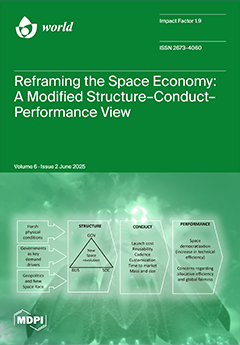HIV/AIDS remains a global public health concern, with a high prevalence in sub-Saharan Africa. The President’s Emergency Plan for AIDS Relief (PEPFAR) initiatives, including preexposure prophylaxis (PREP) and postexposure prophylaxis (PEP), significantly reduced HIV infections in South Africa and Nigeria. The suspension of
[...] Read more.
HIV/AIDS remains a global public health concern, with a high prevalence in sub-Saharan Africa. The President’s Emergency Plan for AIDS Relief (PEPFAR) initiatives, including preexposure prophylaxis (PREP) and postexposure prophylaxis (PEP), significantly reduced HIV infections in South Africa and Nigeria. The suspension of United States (U.S.) foreign aid may impact these preventive measures. Although some emergency aid programs were exempted, uncertainty persists, impacting global health initiatives, especially in South Africa and Nigeria. This study investigates the public health impacts of the United States (U.S.) government’s January 2025 suspension of U.S. foreign aid, focusing on its implications for HIV prevention initiatives, such as PREP and PEP, in South Africa and Nigeria. We comprehensively searched keywords such as PEPFAR, PREP, PEP, HIV infection in South Africa or Nigeria, antiretroviral (ARV) drugs, public healthcare impact, 2025 Trump’s foreign aid withdrawal, titles, and abstracts in Google Scholar, PubMed, and Web of Science. The search results were screened from 500 to 150 included articles based on their relevance and quality assessment for inclusion. The review unveiled that Nigeria maintained a continuous increase in HIV/AIDS-related deaths and new HIV infections from 1990, reaching the climax between 1999 and 2005, showing approximately 110,000 HIV/AIDS-related deaths and 200,000 new HIV infections. Notably, due to the PEPFAR intervention in Nigeria, an improved decrease in both HIV/AIDS-related deaths (45,000) and new HIV infections (75,000) was experienced from 2010 to 2023. South Africa experienced a rapid increase between 1990 and 2003 in both HIV/AIDS-related deaths and new HIV infections, reaching the climax around the early 2000s, with about 520,000 new HIV infections and 260,000 HIV/AIDS-related deaths in 2005. Furthermore, there was a continuous decline from 2005 onwards, with 50,000 HIV/AIDS-related deaths and 150,000 new HIV infections by 2023. Therefore, the suspension of this aid threatens disruptions in ARV therapy, possible increases in HIV transmission, shortages in PREP and PEP, the retrenchment of healthcare workers, the suspension of non-governmental organization activities, and the reversal of gains in vulnerable populations, reversing progress toward the 95-95-95 vision, increasing morbidity and mortality rates and financial strain on healthcare systems in these two countries. We recommend proactive measures, such as increased budget allocations for healthcare reforms, exploring local vaccine and health product development and diversifying funding sources in Nigeria, and implementing universal healthcare coverage for South Africans to mitigate the adverse consequences of aid withdrawal.
Full article




